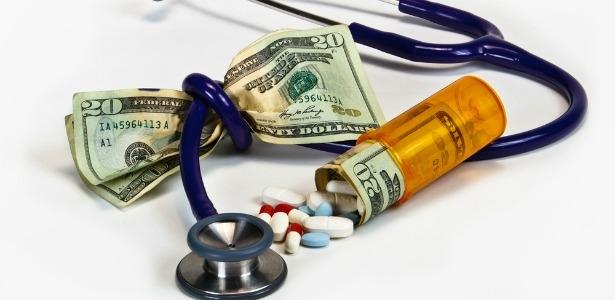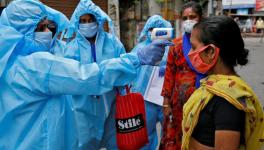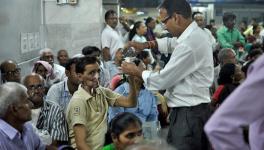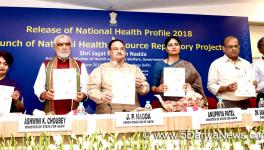Mr. Modi, Not a Fitness Challenge, Country Needs More Hospitals and Doctors

Central Bureau of Health Intelligence, after collating data from various state governments and agencies, released annual National Health Profile 2018 on Tuesday. Deconstructing the health status of the country, the profile challenges the narrative of a ‘fit India’ posed by Prime Minister Narendra Modi on social media. A closer observation of the profile reveals a slew of issues and challenges that makes India a sick country.
It states that the Centre spent only 1.02 per cent of Gross Domestic Product [Rs 1,40,000 crores] in 2015-16 on health. The performance of India also remained poor in South East Asian region countries where it spends less than its neighbouring countries like Maldives, Thailand, Bhutan and Sri Lanka. While Maldives spends 9.4 per cent of GDP as public expenditure on health, Thailand, Bhutan and Sri Lanka spend 2.9, 2.5 and 1.6 per cent of their GDP respectively.
The data shows that India needs to go a long way if it wishes to get included in the club of countries with universal health care. Sweden tops the chart with 9 per cent of expenditure followed by countries like Denmark, Netherlands and Norway.
Similarly, Centre's share in comparison with the state government's contribution to public health expenditure has been reducing consistently from 2009-10. While it remained at 36 per cent in 2009-10, it plummeted to 29 per cent in 2016-17. However, it increased to 37 per cent in 2017-18 owing to the announcement of National Health Protection Scheme. It must be reminded that private expenditure on health still remains three times of government expenditure. The reduction in the funds has resulted into a crumbling healthcare system.
The profile showed that the government hospitals lacked the infrastructure to cater to the needs of patients across the country. The total number of beds in government hospitals remains abysmally low at 710,761, whereas the population of the country has been estimated at 1.2 billion; the national average remained high at 1,844 persons per government hospital bed.
Bihar remains the state with highest number of persons served per government hospital bed with an average of 8,000 persons. Sikkim has improved its performance with an average of 419 people served per government bed.
It also showed an uneven and interesting distribution of hospitals in rural and urban India. While the rural India has 19,810 government hospitals with 2,79,588 beds, urban India has 3,772 hospitals with 4,31,173 beds. It clearly shows that urban India has almost all the big hospitals.
The country also fared poorly when it comes to availability of government doctors to the people. The data explicitly suggests that India does not have enough number of medical practitioners to serve its huge population. It stated that Medical Council of India and state medical councils have registered 10,41,395 doctors till 2017. The national average of a government doctor serving population remained at 1:11082. The ideal ratio suggested by the World Health Organisation is 1: 1000 persons. It means Indian government doctors are laden 11 times more burden than expected.
The data of National Health Profile clearly suggest India remains far from achieving its dream of a healthy and fit country.
Get the latest reports & analysis with people's perspective on Protests, movements & deep analytical videos, discussions of the current affairs in your Telegram app. Subscribe to NewsClick's Telegram channel & get Real-Time updates on stories, as they get published on our website.


















